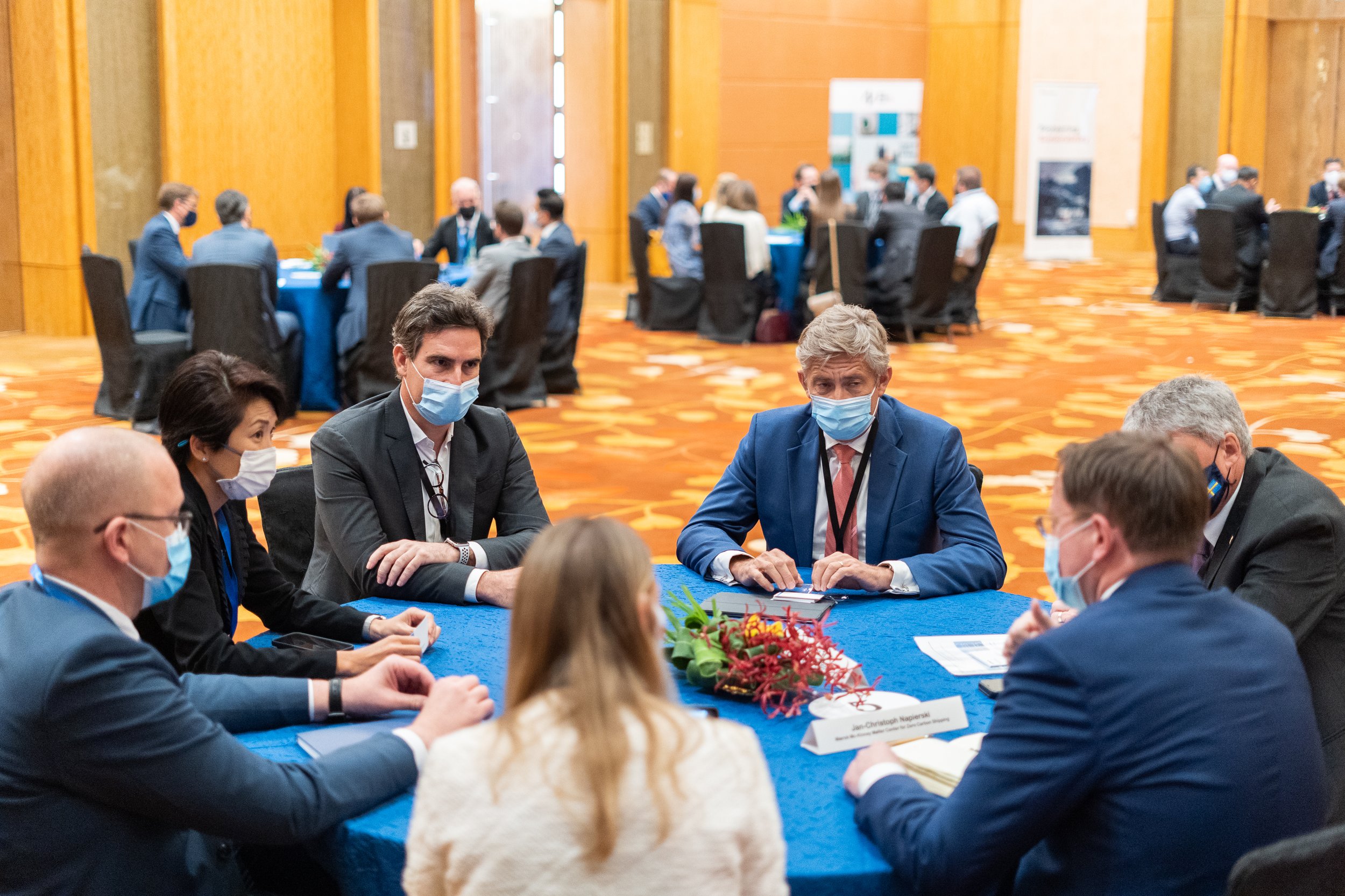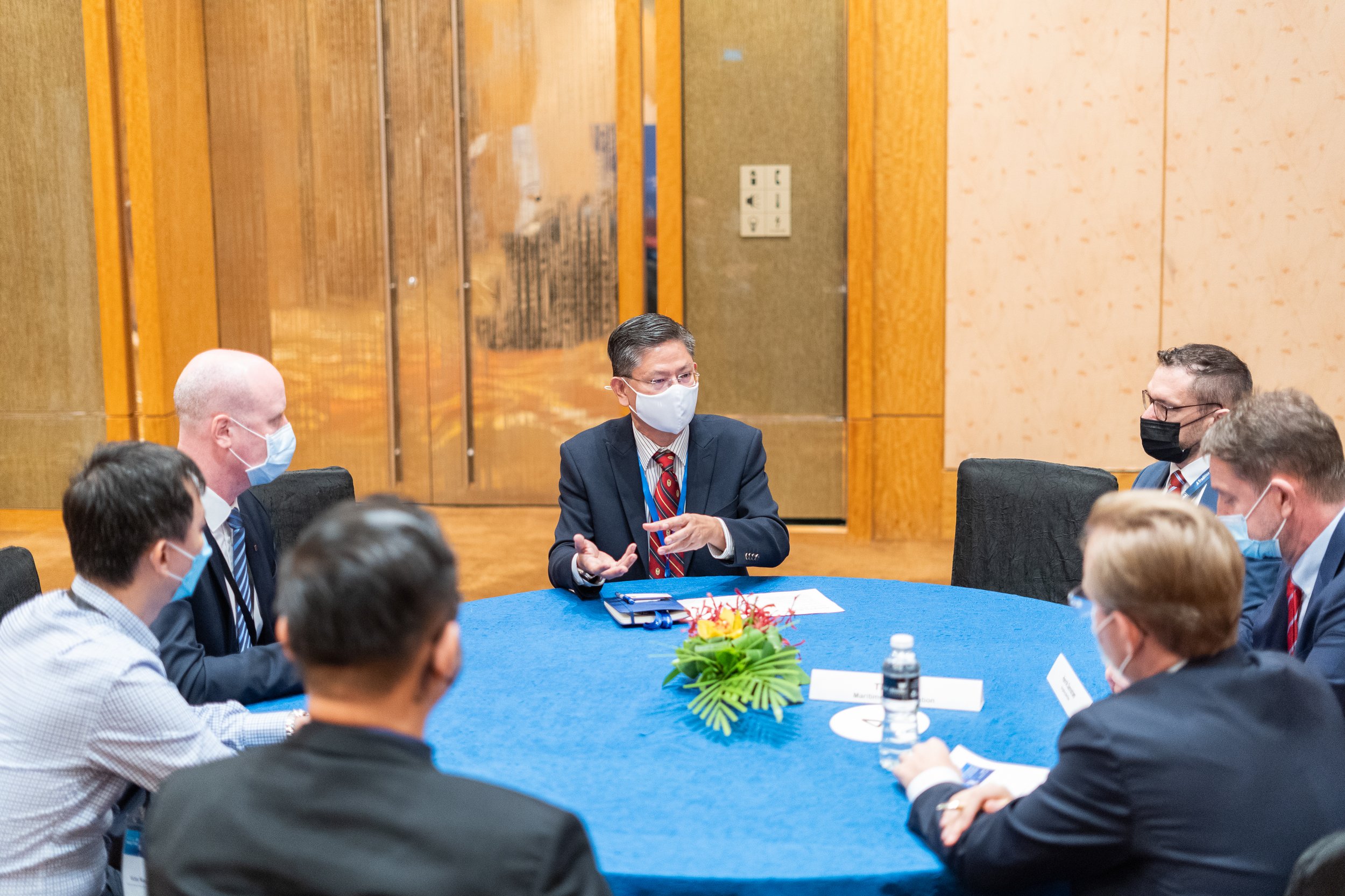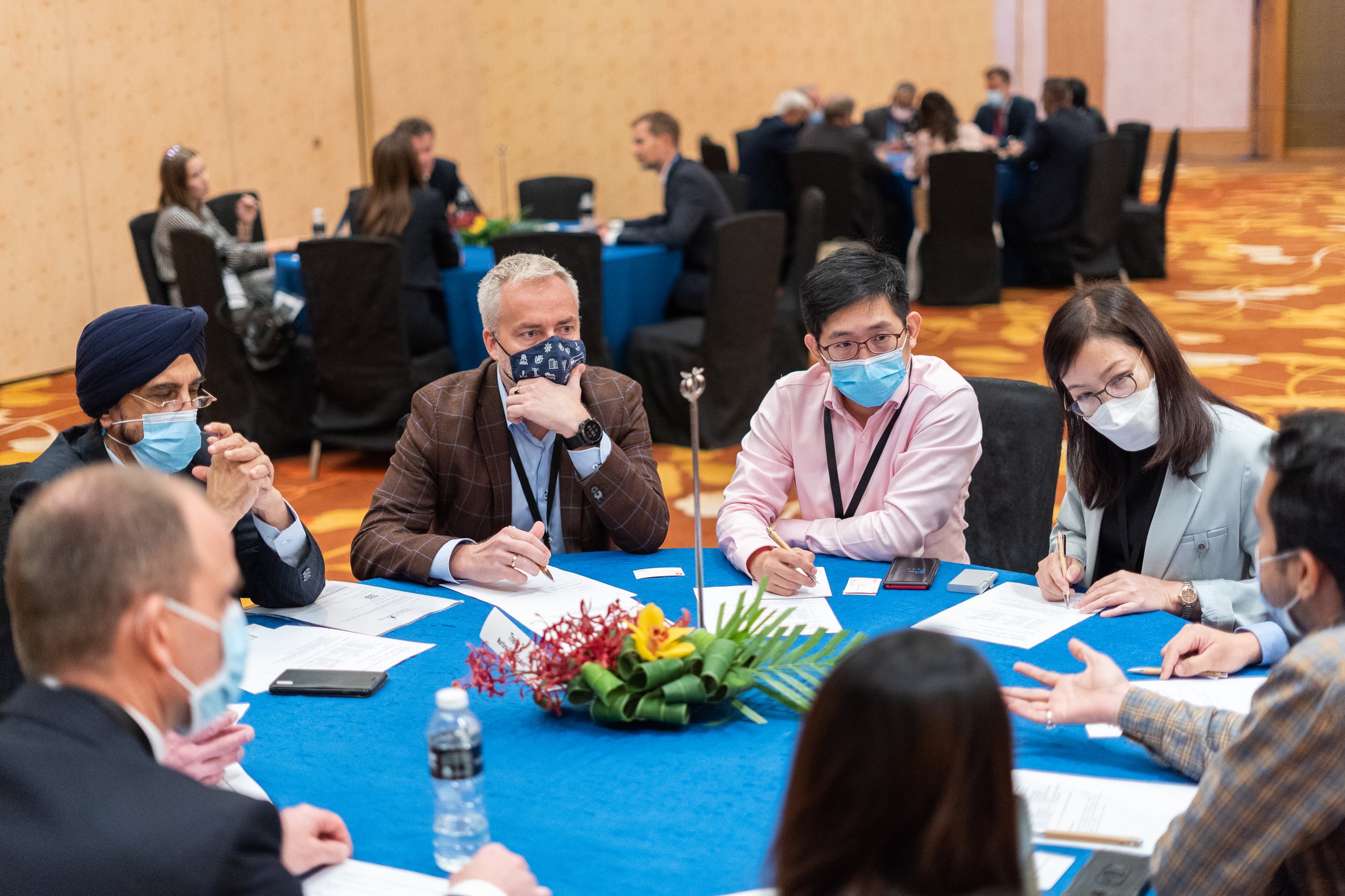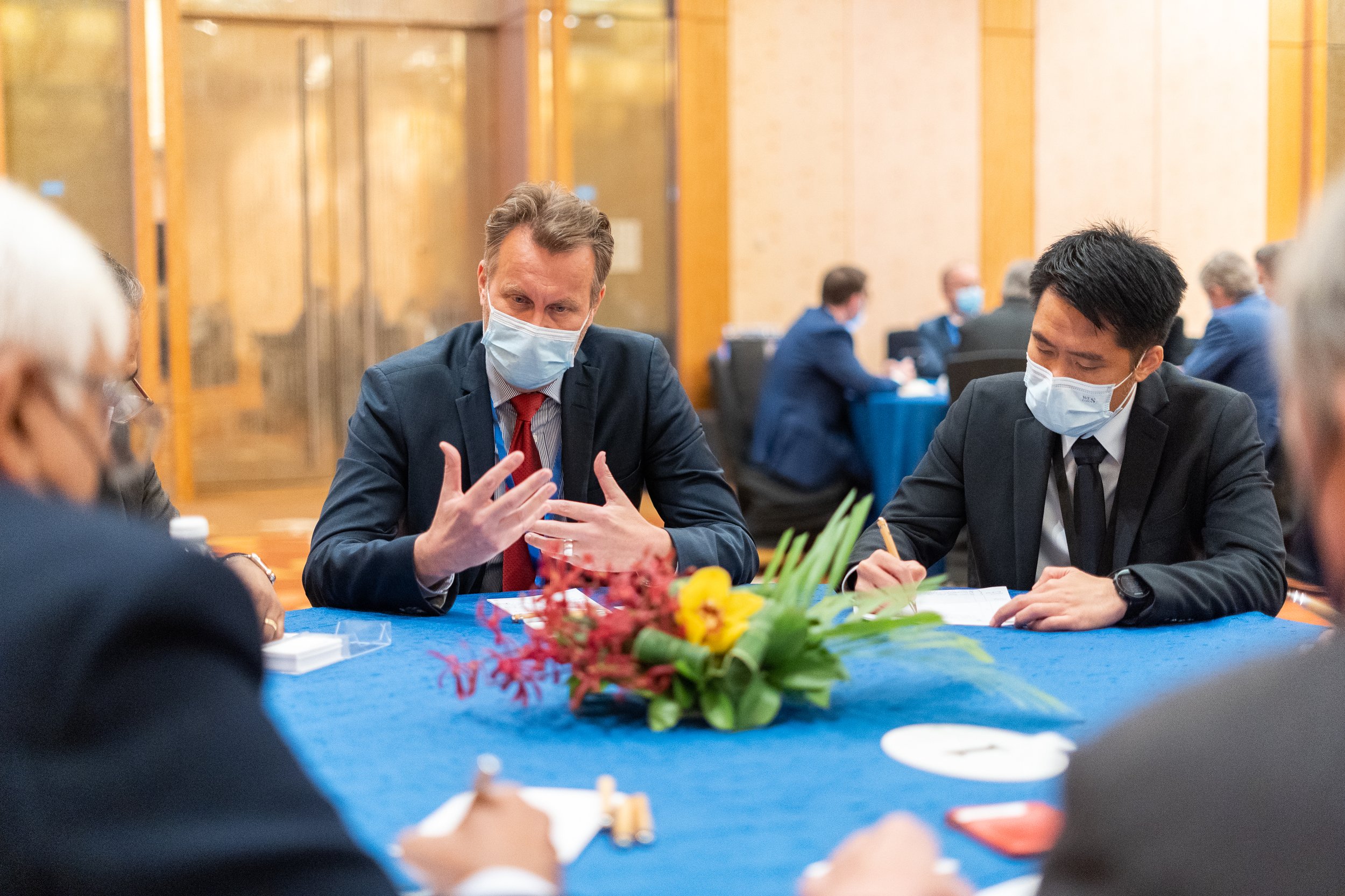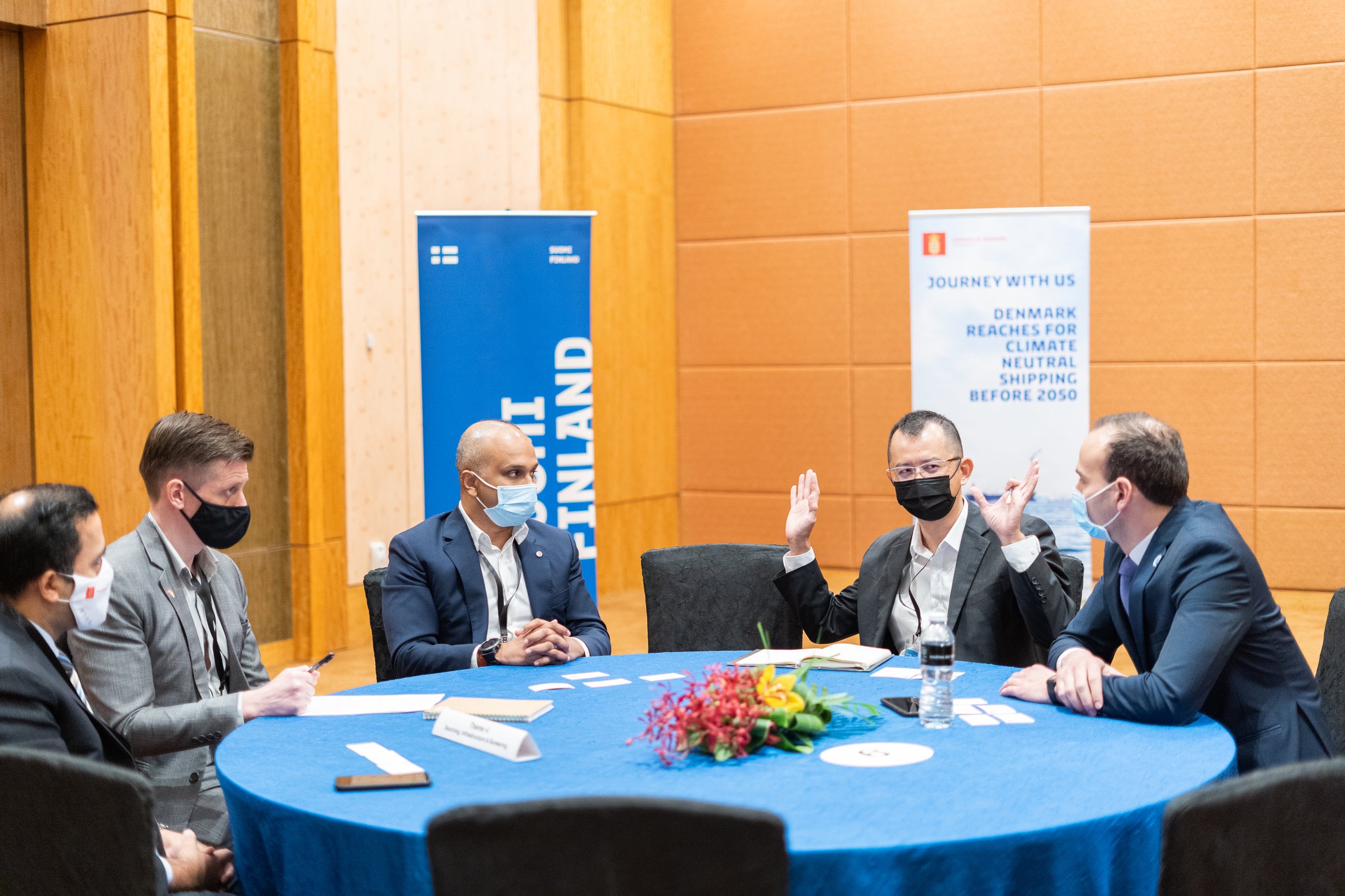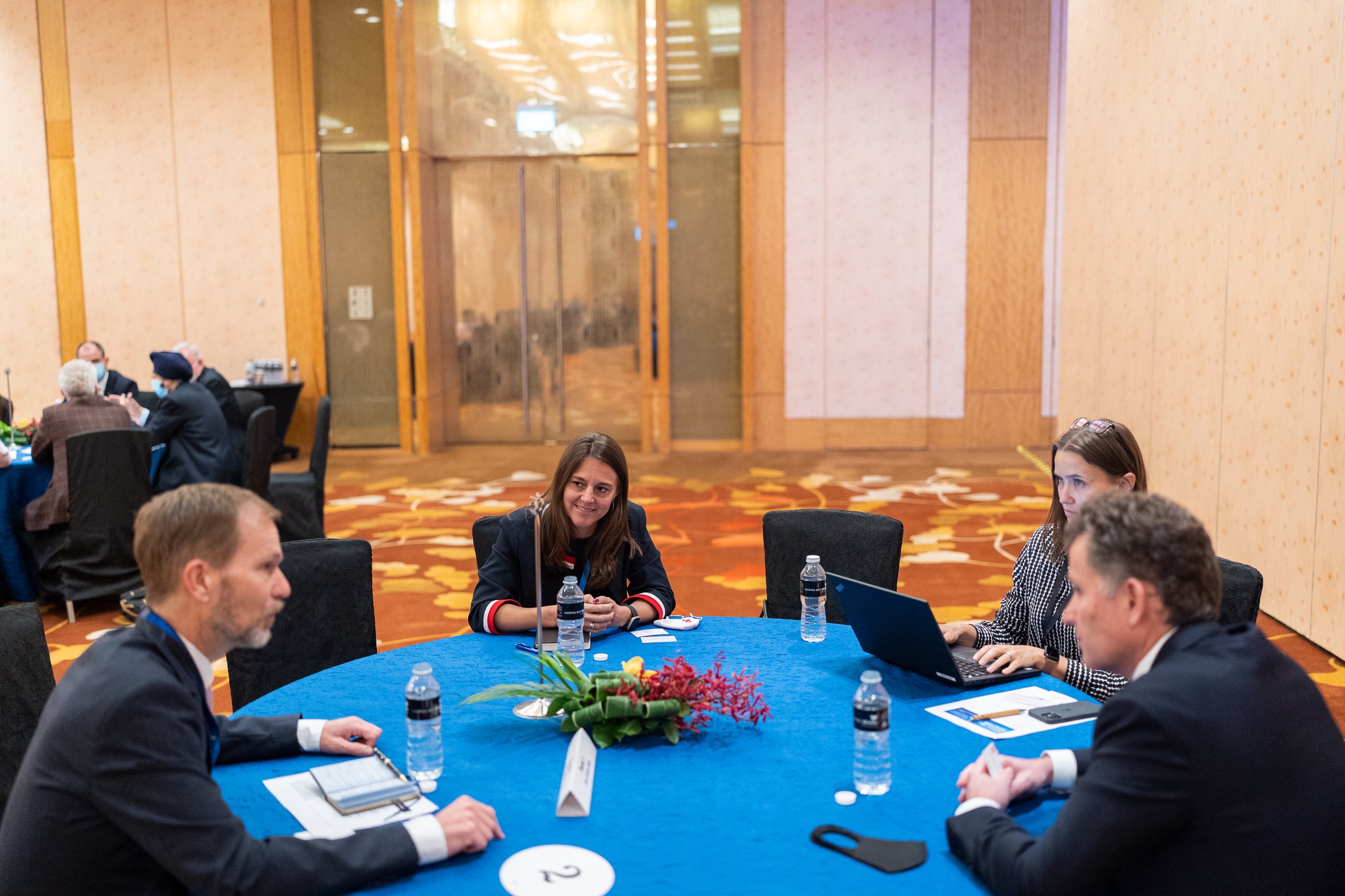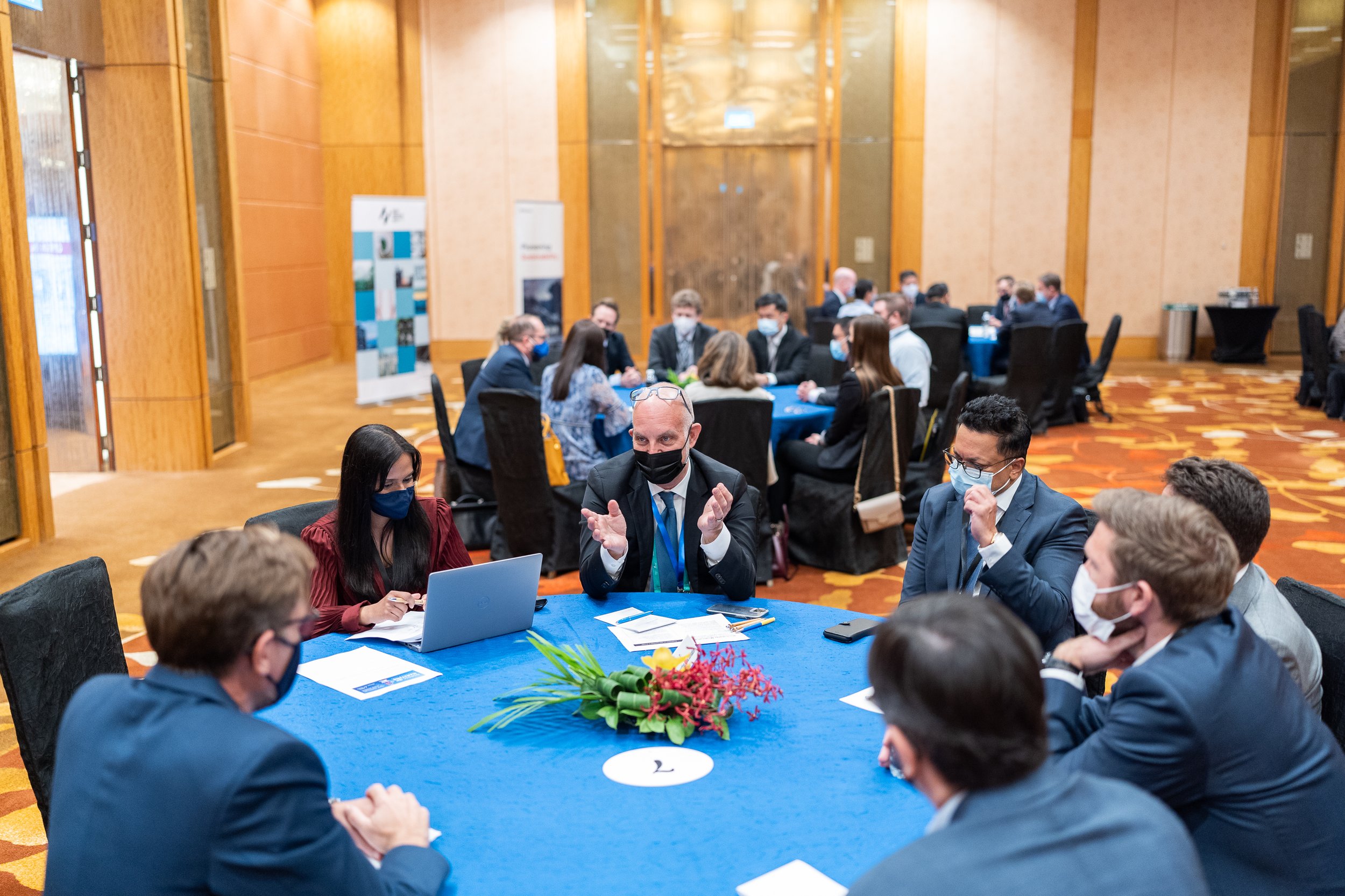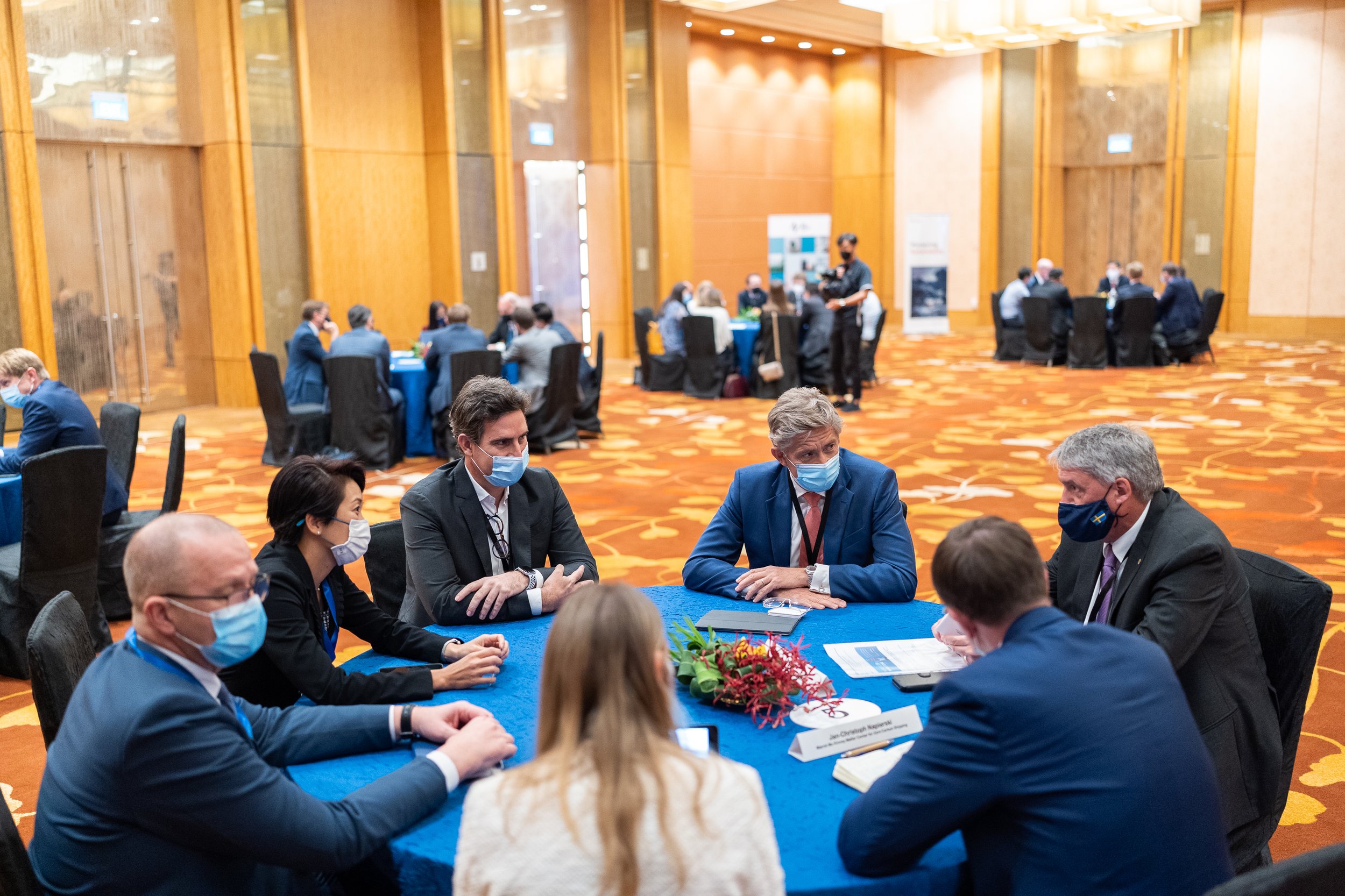Nordic Maritime 2022: Green Transition to a Sustainable Ocean Economy
On April 4th, the Nordic Maritime 2022 conference was organised by the Nordic Embassies, Trade Promotion Offices, Nordic Innovation House in Singapore, Nordic Innovation and North Atlantic Co-operation (NORA), who promote the Nordic sustainable shipping and port operations, ocean tech, and green maritime innovations, and show how we support businesses, research and academic cooperations with Singapore and the Southeast Asian region. It was held in conjunction and co-located with the annual Singapore Maritime Week organised by the Maritime and Port Authority of Singapore.
H.E. Eivind S. Homme, Ambassador of Norway to Singapore, Royal Norwegian Embassy
The conference started with welcome remarks by H.E. Eivind S. Homme, Ambassador of Norway of the Royal Norwegian Embassy in Singapore introducing the objectives of Nordic cooperation and Vision 2030 – The Nordic region will become “the most sustainable and integrated region in the world” and make this vision reality, actions for strengthening the sustainability of oceans and ocean industries are called for.
The Nordic initiative on Sustainable Ocean Economy aims to strengthen Nordic ocean industries by promoting cross-border collaboration and innovation, and by creating new opportunities for growth and innovation in the region. To learn more about the Nordics as a leading region in the development of a sustainable ocean economy, download the ‘Sustainable Ocean Economy: Mapping of Nordic Strongholds’ report by Nordic Innovation.
Mr Andreas Nordseth, Director General, Danish Maritime Authority
Opening remarks by Mr Andreas Nordseth, Director General of the Danish Maritime Authority, brought forth ideas for a sustainable global shipping sector. He proposed looking at the entire value chain and international cooperation.
Firstly, we need the IMO to adopt ambitious global regulations that can accelerate the reduction of greenhouse gas emissions from the Shipping sector. The goal should be zero emissions by 2050.
Secondly, we need investments in research, innovation, development and demonstration of zero-emission shipping. We need to show that zero-emission shipping is possible and make sure that investments in zero-emission vessels are competitive by no later than 2030. We need a fast development of the infrastructure to support new, green fuels and on-shore and off-shore power supply. For one, we have a strong platform for cooperation across the Nordic region in the Nordic Council of Ministers, where a number of projects are already ongoing.
Thirdly, we in the Nordics have a long history of public-private cooperation which is absolutely essential to create ownership and get everyone on board.
Ms Quah Ley Hoon, Chief Executive, Maritime and Port Authority of Singapore
We are also thankful for the presence and opening address given by our Singapore Guest-of-Honour, Ms Quah Ley Hoon, Chief Executive, Maritime and Port Authority of Singapore. She presented the opportunities and challenges in decarbonisation in the long run. For more details on Ms Quah’s speech, click here!
Dr Bo Cerup-Simonsen, Chief Executive Officer, Mærsk Mc-Kinney Møller Center for Zero Carbon Shipping
Dr Bo Cerup-Simonsen, Chief Executive Officer of Mærsk Mc-Kinney Møller Center for Zero Carbon Shipping delivered a passionate keynote speech “Decarbonising the Maritime Industry – What will it take and where do we start?”. He urged for more collaboration between public and private sectors in an attempt to accelerate the decarbonization of the shipping industry.
Our expert panel discussed the “Collaborative Alignment for a Sustainable Ocean Economy” and tackled the question of which is the global initiatives necessary to make decarbonisation possible. The four areas to look at are energy efficiency, new fuels, policy and regulations and get going. The energy system is complex and we are so entrenched in the energy infrastructure created decades ago. It is about collaboration outside the sector with the fuel and energy producers.
Watch our video to hear the lively discussion from the panel.
Read our feature in Singapore Maritime Week Show Dailies.
Moderated by Dr Mikael Lind, Senior Strategic Research Advisor, Research Institutes of Sweden (RISE). The panellists include Dr Bo Cerup-Simonsen (Chief Executive Officer, Mærsk Mc-Kinney Møller Center for Zero Carbon Shipping), Prof Lynn Loo (Chief Executive Officer, Global Centre for Maritime Decarbonisation), Esa Lindqvist (Chief Advisor, Maritime and Ports, Business Finland) and Cristina Saenz de Santa Maria (Regional Manager, Region South East Asia, Pacific & India, DNV Singapore).
SMI-RISE MOU Signing Ceremony
At this event, we also hosted the signing of an important Memorandum of Understanding between The Singapore Maritime Institute (SMI) and the Research Institutes of Sweden (RISE). This Memorandum marks the beginning of a new era of collaboration between Singapore and Sweden. SMI and RISE will work together to identify common areas of interest in four broad areas of maritime informatics, supply chain innovation and efficiency, decarbonisation and sustainability, and safety and security.
The MOU was signed by Mr Cheng Peng Tan, Executive Director of SMI and Professor Mikael Lind, Senior Strategic Research Advisor of RISE. Witnessed by H.E. Mr Kent Härstedt, Ambassador of Sweden to Singapore and Mr Wong Weng Sun, Chairman of SMI Board and Governing Council.
As part of the programme, our industry experts participated in five thematic Roundtables to discuss actions needed for short/long term goals within maritime decarbonisation. Here are the key takeaways from each Roundtable:
Theme 1: Zero Carbon Fuels
• Take stock of the current situations and understand the challenges; in order to create clear targets, and achieve goals in a realistic timeline.
• Equipment and technology developments for zero-carbon fuels need to be agnostic to all fuels. Manufacturers can also set common sustainability goals and cultivate active collaboration opportunities.
• Port Authorities can consider enlarging mandates and responsibilities to address fuel emissions produced by vessels at the port – such as imposing penalties for vessel emissions, restricting waiting time or providing incentives for innovative technologies.
Theme 2: Maritime Electrification
• Charging infrastructure is among the largest challenge with scaling difficulties. Drivers should be regulated and public incentives, but can also be premiums for green services.
• Available technologies need to be standardised and better performing including battery packs, battery replacement, second-life, hybrid engines, and diesel-electric.
Theme 3: Standards & Regulations
• Maritime regulation is slow because of its international nature. There is a need for a bottom approach and working in alliances next to the international system to speed up the process.
• Market-based measures are also crucial to getting regulations in place. Such as the EU system can be a key driver of these instruments or collaborating with developing countries when upscaling.
• Understanding that regulation is complex and covers many different agencies and authorities. The shipping industry is well connected and ought to look broader at sustainability.
Theme 4: Sourcing, Infrastructure & Bunkering
• There are six prevalent green fuels in play: Hydrogen, Ammonia, Methanol, Biofuels, Electric and Nuclear. In order to scale demand, infrastructure coupling is needed. Another key driver is flexibility - since green fuel production is currently fragmented, certificates are needed for purchasing green fuels in a similar way to renewable energy certificates.
Theme 5: Digitalisation Supporting Decarbonisation
• Data transparency is needed between ship owners, port operators and more to aid digitalisation which will in turn support decarbonisation. Data transparency and knowledge of current cases enable better planning, coordination, and synchronisation for reducing time spent in the port. New and improved IMO standards in the maritime sector can also be one way forward.
Conclusion
IMO has goals for 50% carbon footprint by 2030 and zero footprint by 2060. The sentiments we hear at Nordic Maritime from everyone in the industry can be summarised into these four points:
Decarbonisation of the maritime and port section will require new bunker fuels such as hydrogen, ammonia and biofuels and new types of vessels such as hydrogen carriers and bunker vessels for alternative fuels.
We heard from The Maritime and Port Authority of Singapore about their numerous initiatives including developing and piloting electric harbour crafts; addressing challenges such as effective chargers for maritime applications; new ship designs adapted for electrical vessels; charging infrastructure, logistics and (green) electricity sourcing.
There is a need to establish regional and international collaboration with better coordination between the government agencies, ship and port owners as well as manufacturers.
These collaborative efforts should be driven starting now.
For more highlights on Nordic Maritime 2022 -
Nordic Maritime 2022: Green Transition to a Sustainable Ocean Economy - click here
Opening Address from MPA’s Chief Executive at Nordic Maritime 2022 - click here







